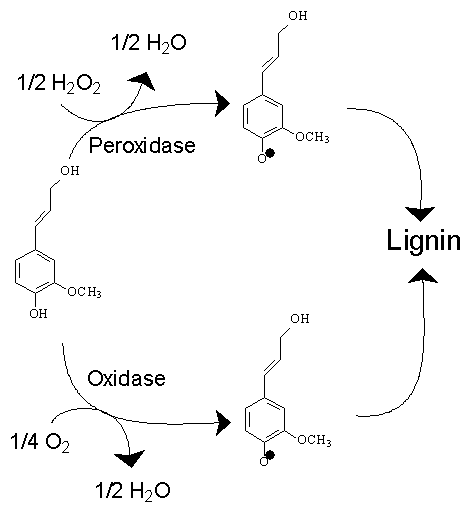oxidative enzyme on:
[Wikipedia]
[Google]
[Amazon]
 An oxidative enzyme is an
An oxidative enzyme is an
 An oxidative enzyme is an
An oxidative enzyme is an enzyme
An enzyme () is a protein that acts as a biological catalyst by accelerating chemical reactions. The molecules upon which enzymes may act are called substrate (chemistry), substrates, and the enzyme converts the substrates into different mol ...
that catalyses an oxidation
Redox ( , , reduction–oxidation or oxidation–reduction) is a type of chemical reaction in which the oxidation states of the reactants change. Oxidation is the loss of electrons or an increase in the oxidation state, while reduction is ...
reaction. Two most common types of oxidative enzyme
An enzyme () is a protein that acts as a biological catalyst by accelerating chemical reactions. The molecules upon which enzymes may act are called substrate (chemistry), substrates, and the enzyme converts the substrates into different mol ...
s are peroxidase
Peroxidases or peroxide reductases ( EC numberbr>1.11.1.x are a large group of enzymes which play a role in various biological processes. They are named after the fact that they commonly break up peroxides, and should not be confused with other ...
s, which use hydrogen peroxide
Hydrogen peroxide is a chemical compound with the formula . In its pure form, it is a very pale blue liquid that is slightly more viscosity, viscous than Properties of water, water. It is used as an oxidizer, bleaching agent, and antiseptic, usua ...
, and oxidase
In biochemistry, an oxidase is an oxidoreductase (any enzyme that catalyzes a redox reaction) that uses dioxygen (O2) as the electron acceptor. In reactions involving donation of a hydrogen atom, oxygen is reduced to water (H2O) or hydrogen peroxid ...
s, which use molecular oxygen
Oxygen is a chemical element; it has chemical symbol, symbol O and atomic number 8. It is a member of the chalcogen group (periodic table), group in the periodic table, a highly reactivity (chemistry), reactive nonmetal (chemistry), non ...
. They increase the rate at which ATP is produced aerobically.
Oxidative enzymes are responsible for the browning of fruits like apples. When the surface of apples are exposed to the oxygen in the air, the oxidative enzymes like polyphenol oxidase and catechol oxidase oxidize the fruit (electrons are lost to the air). Such browning can be prevented by cooking the fruit or lowering the pH (which destroys, inactivates, or denatures the enzyme) or by preventing oxygen from getting to the surface (such as by covering the fruit).
See also
*Oxidoreductase
In biochemistry, an oxidoreductase is an enzyme that catalyzes the transfer of electrons from one molecule, the reductant, also called the electron donor, to another, the oxidant, also called the electron acceptor. This group of enzymes usually ut ...
References
Enzymes EC 1.1.3 EC 1.11.1 {{1.1-enzyme-stub